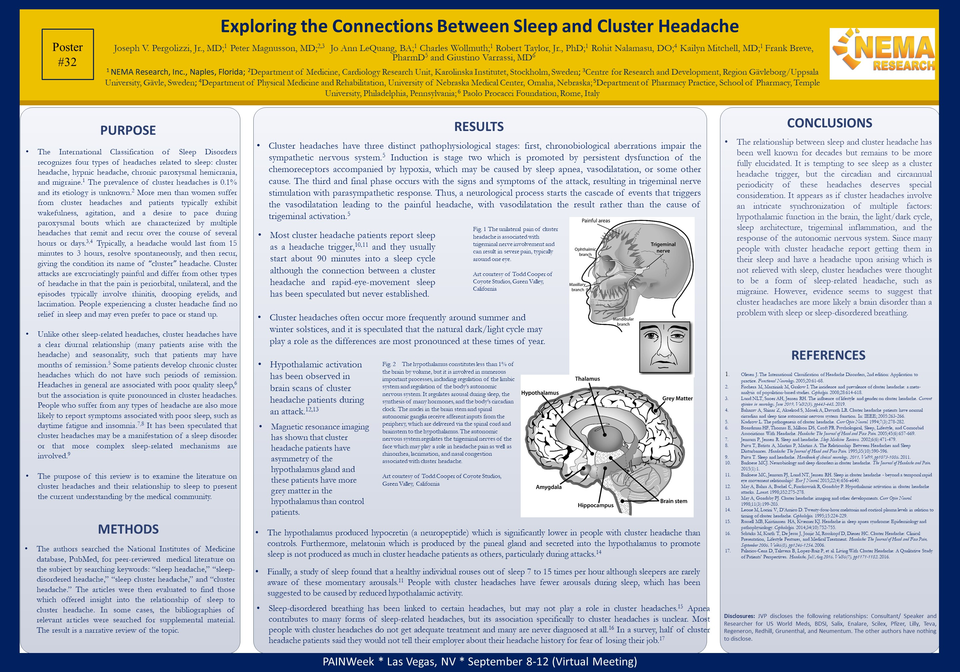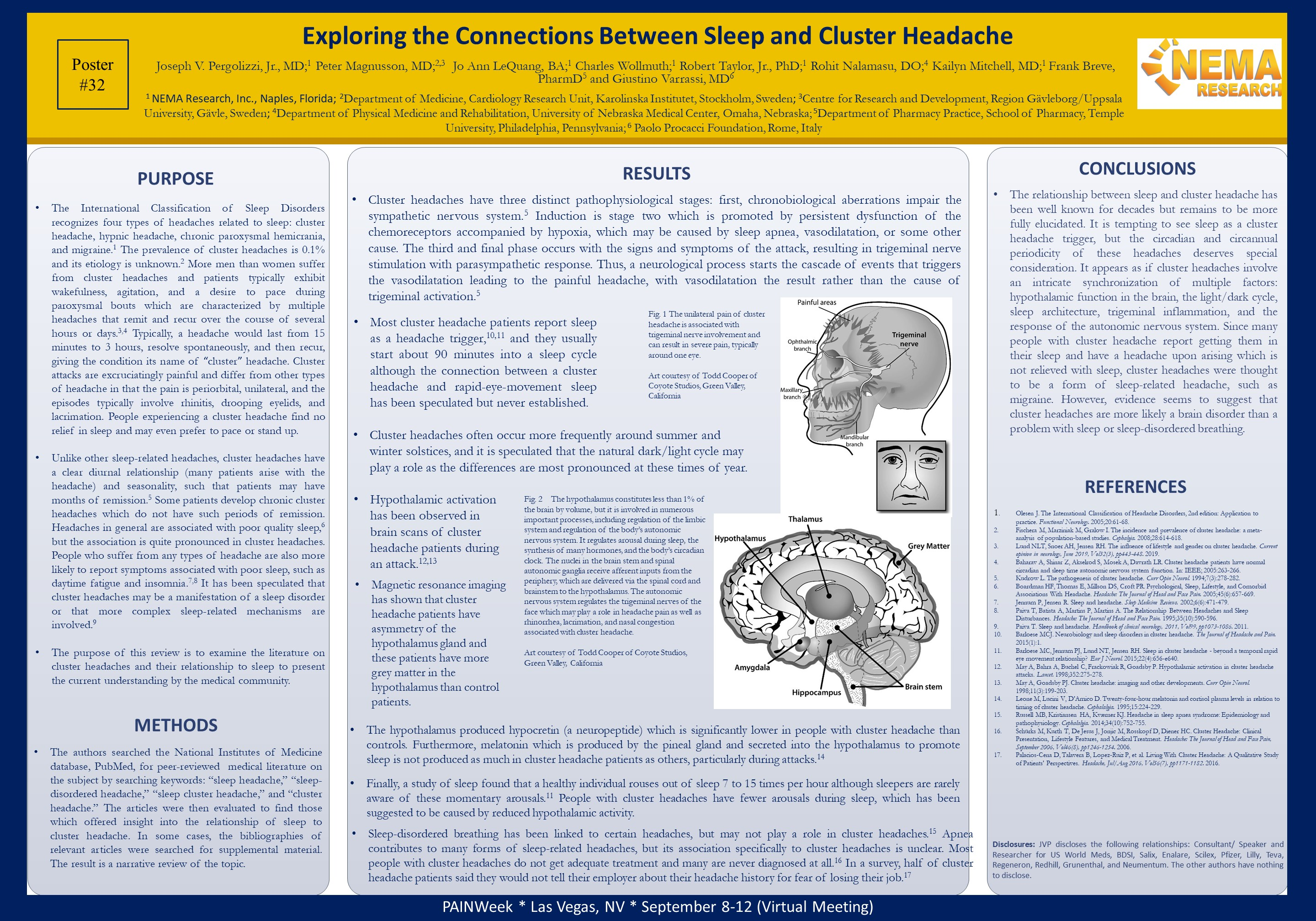Exploring the Connections Between Sleep and Cluster Headache
Cardiology, Native Cardio Inc., Naples, USA
Joseph Pergolizzi, Peter Magnusson, PhD, MDCardiology, Center of Research and Development Region Gävleborg /Uppsala University, Gävle, SWE
Peter Magnusson, Jo Ann K. LeQuang, MPHNEMA Research, Inc., Naples, Florida, USA
For correspondence:
joannlequang@gmail.com
Research and Development, NEMA Research Group, Naples, FL, USA
Charles Wollmuth, Robert Taylor, PhDChief Operating Officer, NEMA Research, Inc., Naples, FL, USA
Robert Taylor, Rohit NalamasuDepartment of Physical Medicine and Rehabilitation, University of Nebraska Medical Center, Omaha, NE, USA
Rohit Nalamasu, Kailyn Mitchell , MDNEMA Research, Naples, USA
Kailyn Mitchell , Frank Breve, PharmDDepartment of Pharmacy, Temple University, Philadelphia, USA
Frank Breve, Giustino Varrassi, ProfessorPresident, Paolo Procacci Foundation, Rome, ITA
Giustino Varrassi





